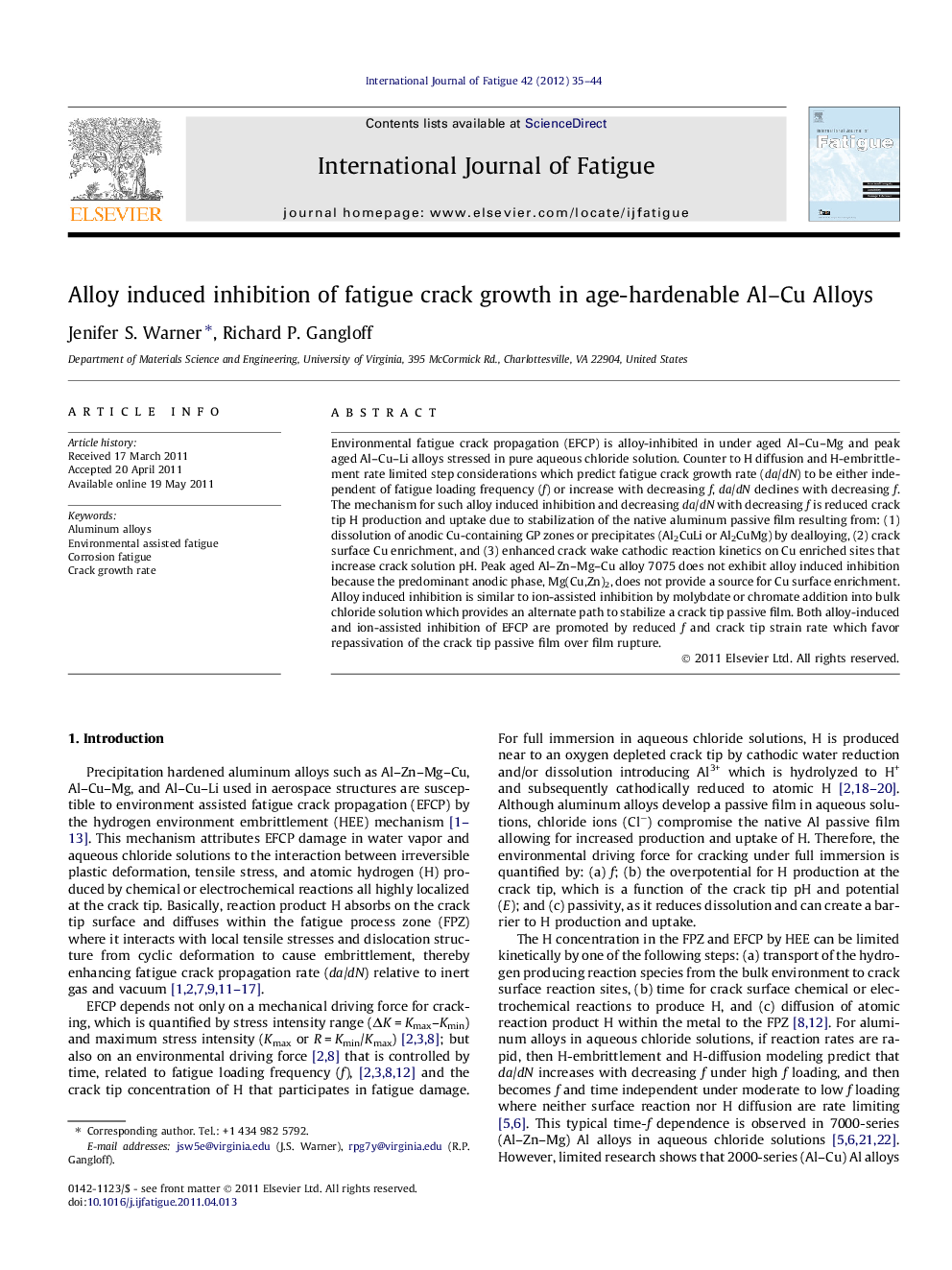| کد مقاله | کد نشریه | سال انتشار | مقاله انگلیسی | نسخه تمام متن |
|---|---|---|---|---|
| 781046 | 1463790 | 2012 | 10 صفحه PDF | دانلود رایگان |

Environmental fatigue crack propagation (EFCP) is alloy-inhibited in under aged Al–Cu–Mg and peak aged Al–Cu–Li alloys stressed in pure aqueous chloride solution. Counter to H diffusion and H-embrittlement rate limited step considerations which predict fatigue crack growth rate (da/dN) to be either independent of fatigue loading frequency (f) or increase with decreasing f, da/dN declines with decreasing f. The mechanism for such alloy induced inhibition and decreasing da/dN with decreasing f is reduced crack tip H production and uptake due to stabilization of the native aluminum passive film resulting from: (1) dissolution of anodic Cu-containing GP zones or precipitates (Al2CuLi or Al2CuMg) by dealloying, (2) crack surface Cu enrichment, and (3) enhanced crack wake cathodic reaction kinetics on Cu enriched sites that increase crack solution pH. Peak aged Al–Zn–Mg–Cu alloy 7075 does not exhibit alloy induced inhibition because the predominant anodic phase, Mg(Cu,Zn)2, does not provide a source for Cu surface enrichment. Alloy induced inhibition is similar to ion-assisted inhibition by molybdate or chromate addition into bulk chloride solution which provides an alternate path to stabilize a crack tip passive film. Both alloy-induced and ion-assisted inhibition of EFCP are promoted by reduced f and crack tip strain rate which favor repassivation of the crack tip passive film over film rupture.
Journal: International Journal of Fatigue - Volume 42, September 2012, Pages 35–44